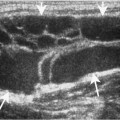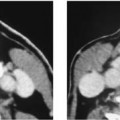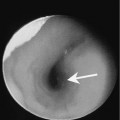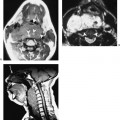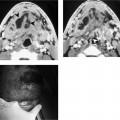Chapter 183 The same malignancies that arise in the major salivary glands occur in the minor salivary glands. Depending on the series, approximately half of all tumors of minor salivary gland origin are malignant. The most common location is the palate. An interesting paradox is that the smaller the salivary gland, the greater the likelihood that a tumor originating from that gland will be malignant. The incidence of a salivary gland tumor being malignant is substantially greater in the palate than in the parotid. Patients often present with asymptomatic masses that have been present for several months. Pain and ulceration may be present; however, these are not consistent findings. It has been estimated that there are between 500 and 1000 minor salivary glands located throughout the oral cavity and oropharynx. They may be found within the hard and soft palate, uvula, lips, retromolar trigone, tongue base, floor of mouth, and tonsil. The malignancies that constitute minor salivary gland tumors include adenoid cystic carcinoma, mucoepidermoid carcinoma, and adenocarcinoma. Many investigators now include low grade polymorphous adenocarcinoma as a tumor of minor salivary gland origin. The most common malignancy of the minor salivary glands is adenoid cystic carcinoma. The treatment of malignant salivary gland tumors depends on the exact histologic type. In general, complete surgical resection offers the best chance for cure. Postoperative radiation therapy is required in the majority of cases. The role of neutron beam therapy for unresectable adenoid cystic carcinomas is currently being evaluated. The CT findings are nonspecific. These are usually soft tissue masses that enhance following contrast. The presence of aggressive bone erosion is suggestive of a high grade malignancy (Figs. 183–1 through 183–5).
Malignant Minor Salivary Gland Tumors (Adenoidcystic, Mucoepidermoid, Adenocarcinoma, Low Grade Polymorphous Adenocarcinoma)
Epidemiology
Clinical Findings
Pathology
Treatment
Imaging Findings
CT
MR
Stay updated, free articles. Join our Telegram channel

Full access? Get Clinical Tree


